29 Oct 5 Project Management Tips to use when Timelines are Tight
5 Project Management Tips to use when Timelines are Tight
Business happens fast. Whether you’re a startup or a multinational corporation, the market sometimes forces you to turn on a dime—and that’s when project management gets serious.
How do you keep morale high and successfully deliver on a tight timeline? There’s an old saying that goes: “If you have five minutes to cut down a tree, spend the first two and a half minutes sharpening your axe.”
Nimble project planning starts with sharpening your axe, and the following tips will help your team meet their deadlines without losing their minds:
Tip 1: Create a Risk Response Strategy
Tip 2: Identify Your Dependencies
Tip 3: Allocate Your Resources Carefully
Tip 4: Avoid Scope Creep
Tip 5: Use the Right Tools
Create a Risk Response Strategy
“What could possibly go wrong?” These are often famous last words, but when asked strategically (before you begin), they can save your project from false starts and possibly even failure.
Every project you take on has some risk of failure, so before you begin, you’ll want to identify possible risks and decide how to address them. This is known as risk response, and it involves placing your risks into four different categories. You’ll then deal with each risk accordingly.
The four different types of risk response are:
- Avoid: Eliminate the risk entirely
- Transfer: Use a service, such as an insurance company, to absorb some of the risk
- Mitigate: Reduce the risk of failure to a more reasonable level
- Accept: Face the risk head-on, knowing that eliminating or reducing it is impossible (or too costly to justify)
You can read more about risk response here, but the most important takeaway is to clearly identify all your risks and come up with a strategy to deal with them—especially when timelines are tight.
Identify Your Dependencies
Dependencies are those things that need to happen in order to get the job done, and any good project plan clearly identifies those dependencies up front.
Now, not all dependencies are created equal, which is why it’s important to categorize them. As you list out each dependency, you’ll need to decide whether it’s an external or internal dependency as well as whether it’s a mandatory or discretionary one.
Internal vs. External Dependencies
Internal dependencies are those dependencies that must be completed by people within your organization, while external dependencies must be completed by people outside the organization.
Example: An insurance company is rolling out a new plan. Getting the artwork approved for the brochure is an internal dependency, while getting the plan approved by the state’s insurance commissioner is an external dependency.
Mandatory vs. Discretionary Dependencies
Mandatory dependencies are must-haves. Unless those tasks are checked off, you cannot complete the project. Discretionary dependencies are nice-to-haves—best practices that could be tossed aside in a pinch.
Example: A university is creating a new informational video for prospective students. They’ve captured three hours-worth of footage that they want to edit down to an eight-minute video. Ideally, they’d like to use focus groups to test out certain clips and see what resonates with students. However, if push comes to shove and they don’t have the resources to get as much feedback from students as they’d like, they can scrap the focus groups (a discretionary dependency) without scrapping the editing (a mandatory dependency).
Allocate Your Resources Carefully
When timelines are tight, it’s essential to get a clear, realistic understanding of the resources available (human or otherwise) to complete each task. Make sure employees and contractors don’t over-commit to your project, and allow for some slack. A good rule of thumb is to allocate no more than 80% of your resources when project planning. That way you’ll be prepared if someone resigns, gets sick, or simply can’t make a deadline due to competing priorities.
Avoid Scope Creep
We’ve all seen it happen. You start an afternoon meeting with the goal of tackling some simple task, and by 5 o’clock you’re plotting to rebuild the Roman empire.
That’s scope creep (Good read from Toptal), and it’s a pretty common thing in marketing departments. Marketers are big-picture people, and sometimes they need an executive or a project manager to tug on the reigns and get everyone back on track.
Here are a few ways you can reduce scope creep:
- Get stakeholder and executive buy-in: Getting buy-in from stakeholders and executives before you start will reduce the odds that someone will add new deliverables mid-project.
- Follow the plan: On smaller projects, it may be tempting to create a project plan and forget to visit it. On larger projects? That approach spells disaster. Sticking to the project plan can prevent your team from straying, which keeps the scope from widening.
- Keep communication lines open: When someone goes down the rabbit hole to work on a task, without receiving communication and feedback from their manager or the project owner, it’s easy for them to lose track of the goal. In fact, sometimes your best employees will run wild trying to overachieve, expanding the scope of the project despite their best intentions. When timelines are tight, you need to narrow their focus, and that requires regular communication to make sure they’re on track.
Use the Right Tools
Project management is about giving everyone—employees, management, executives, and stakeholders—a bird’s eye view of all that’s required to complete a project. Theoretically, you could try to do this on a set of tabs in an Excel file, but that gets messy if your team is larger than two or three people. And when timelines are tight, a messy project plan can cause serious panic.
A well-designed project management platform provides a central location where everyone can:
- View the entire schedule
- See who is responsible for what
- Manage resources and capacity planning
- Attach files for review
- Obtain approvals from managers and execs
- Plan budgets and manage expenses
- Run comprehensive reports
There are plenty of systems on the market, but it’s usually best to use one that’s tailored for the work you do. For example, if you work in a marketing department, you’ll get more value from a system designed for marketers than you would from a generic platform.
Shameless Plug?
You may have noticed that we don’t often talk about ourselves on our blog—except when the solution we offer is a perfect fit for the problem you’re trying to solve.
If you’re looking for project management software specifically designed to keep marketing teams on track, take a look at MRMcentral. It’s been continually refined over the past 20 years to meet the unique demands associated with marketing project management, and it’ll keep your team on track when timelines are tight.
Sign up for a free demo today!

